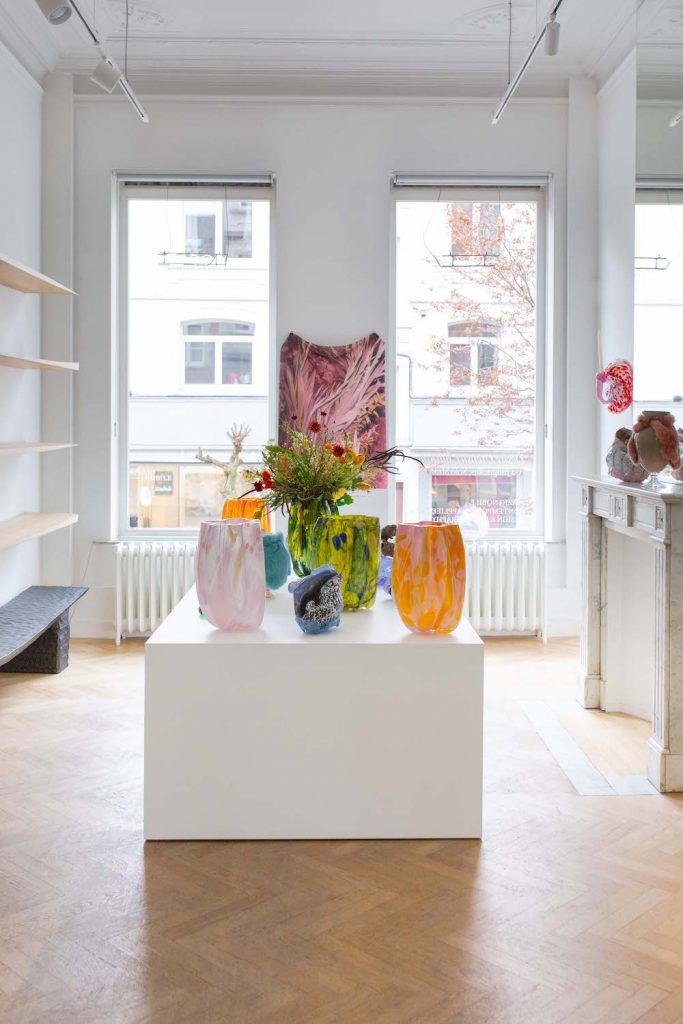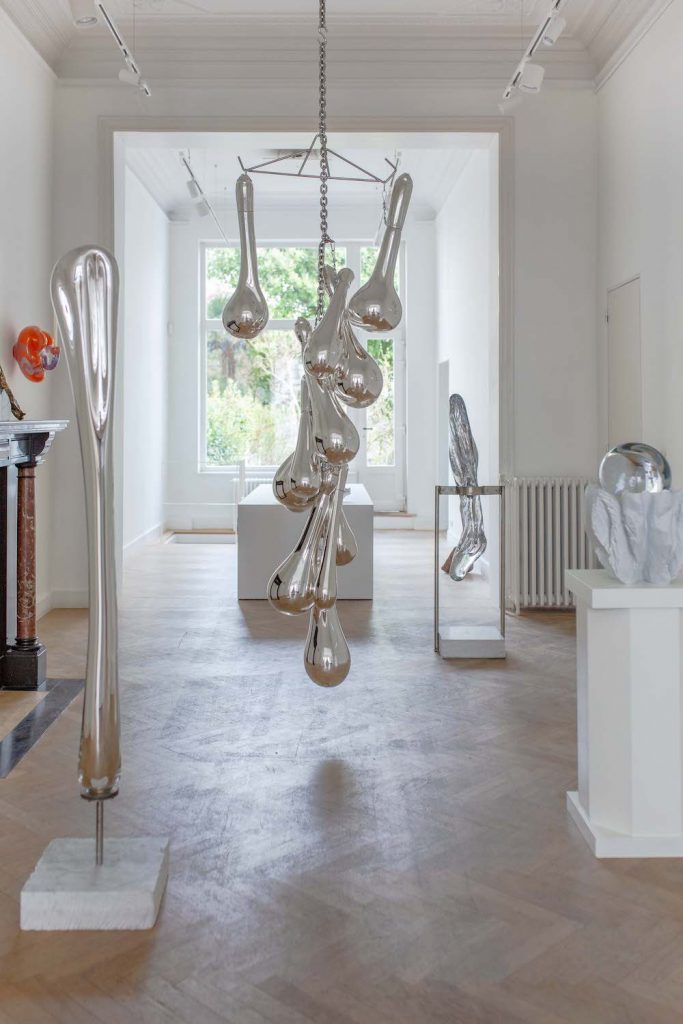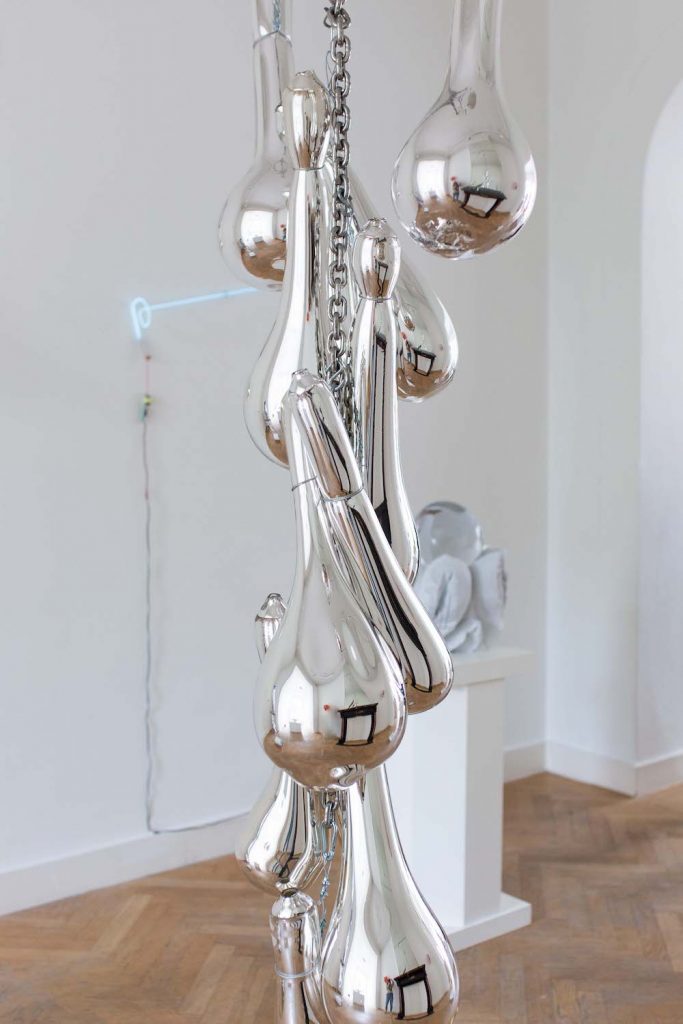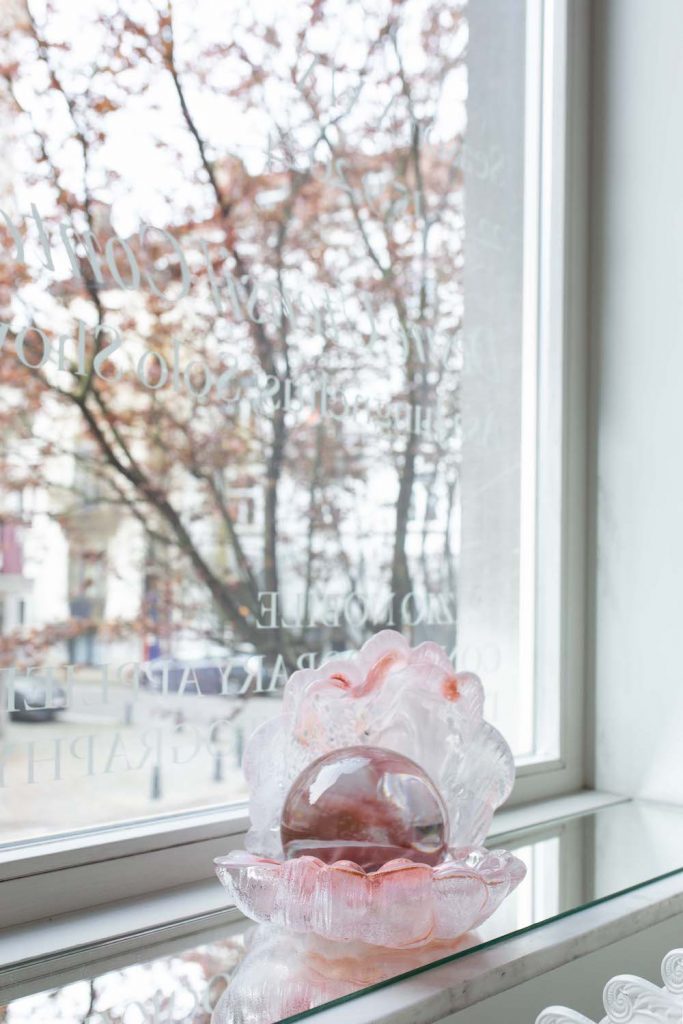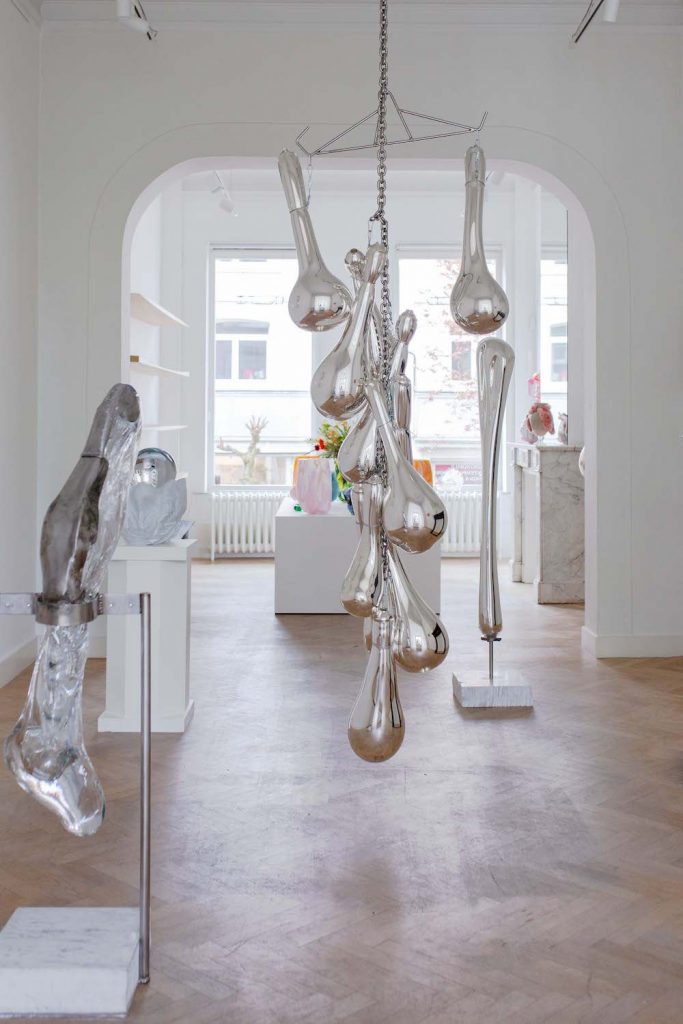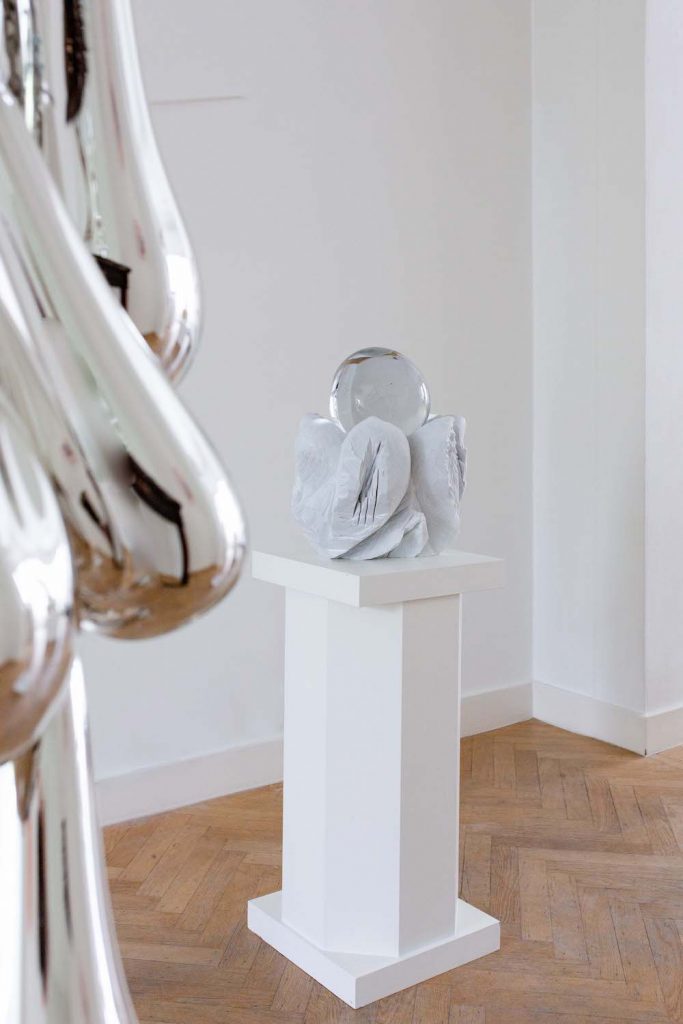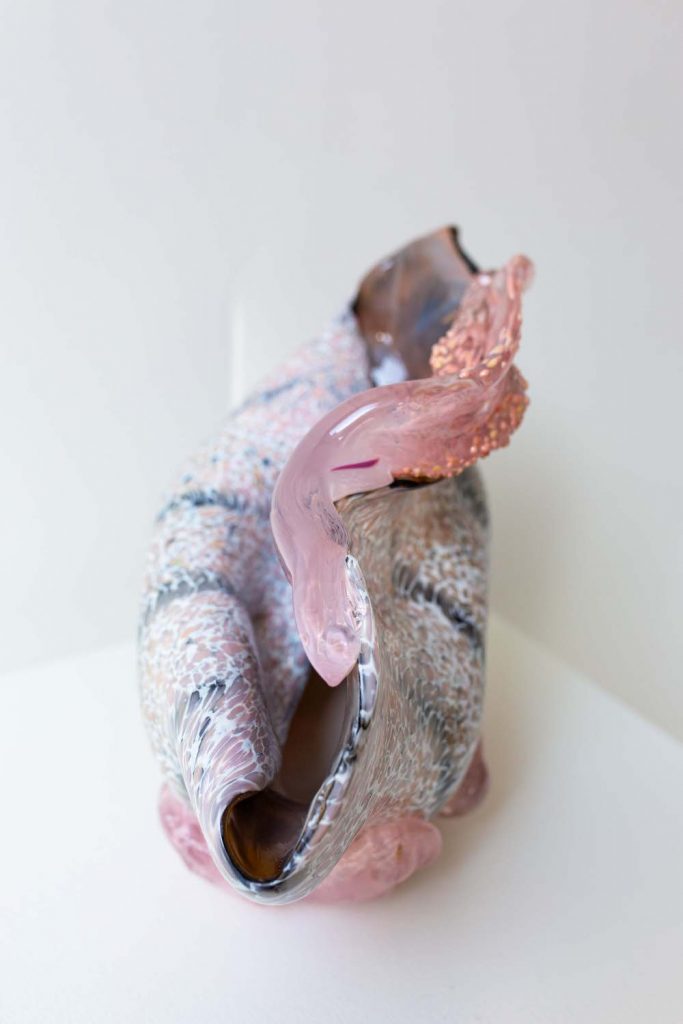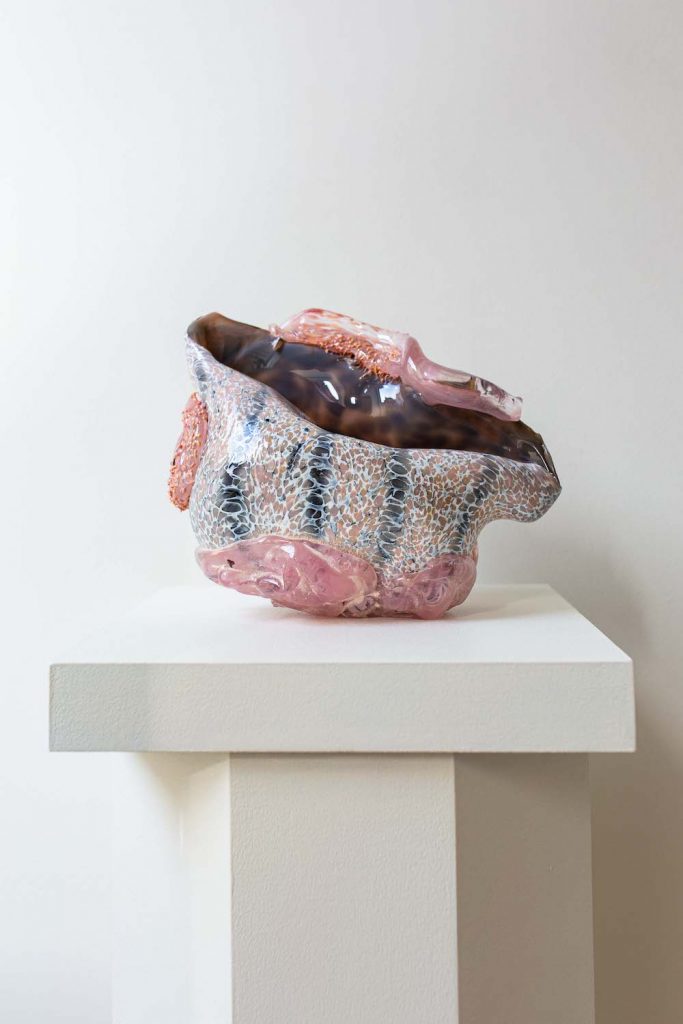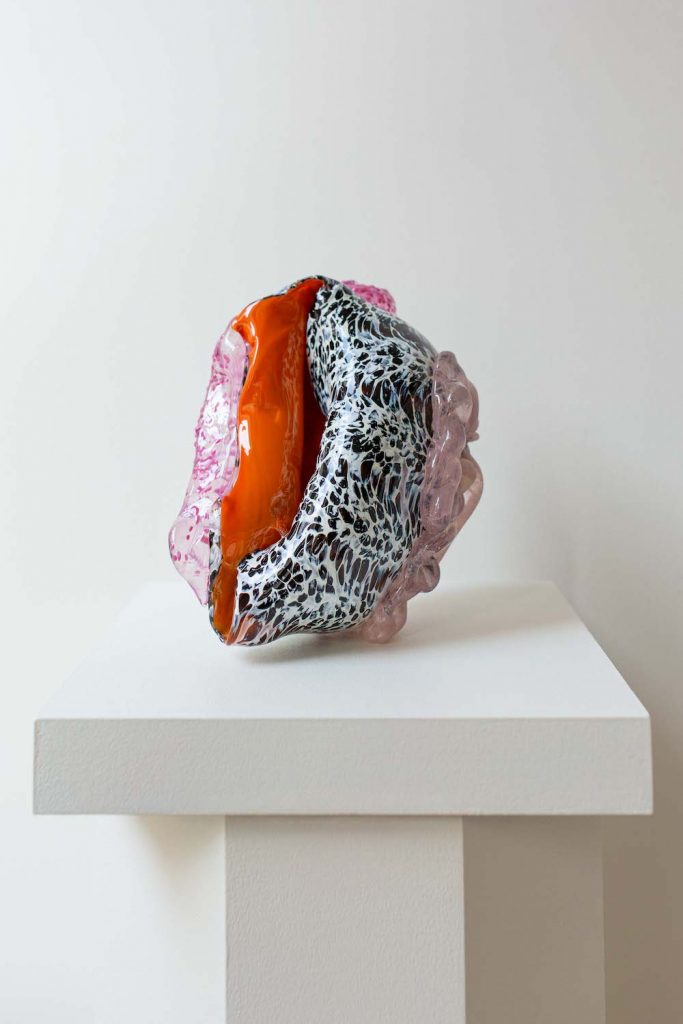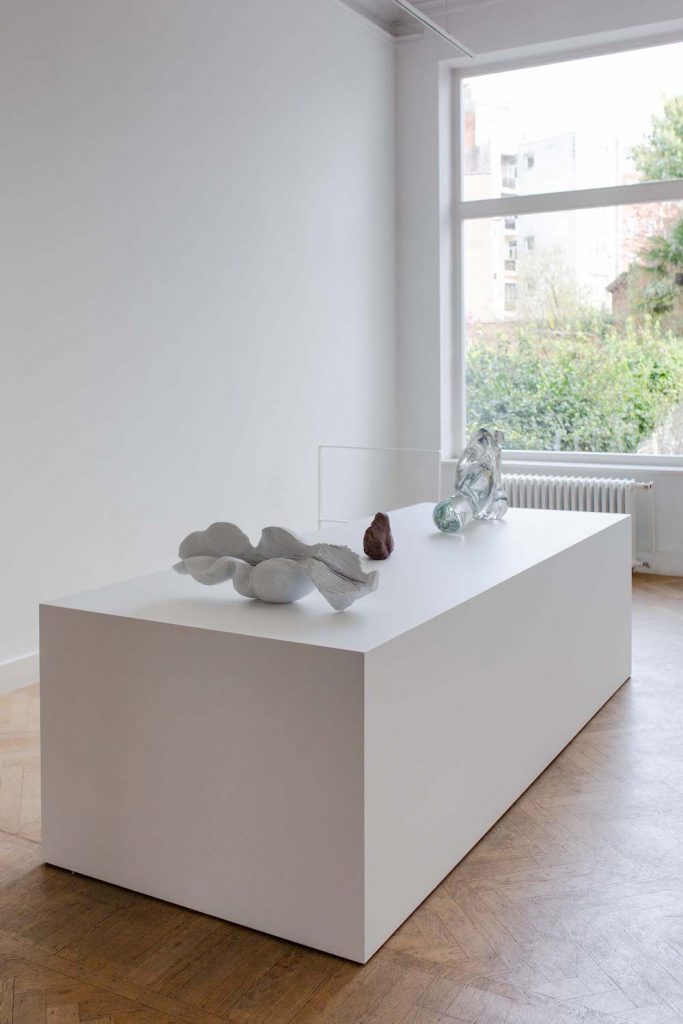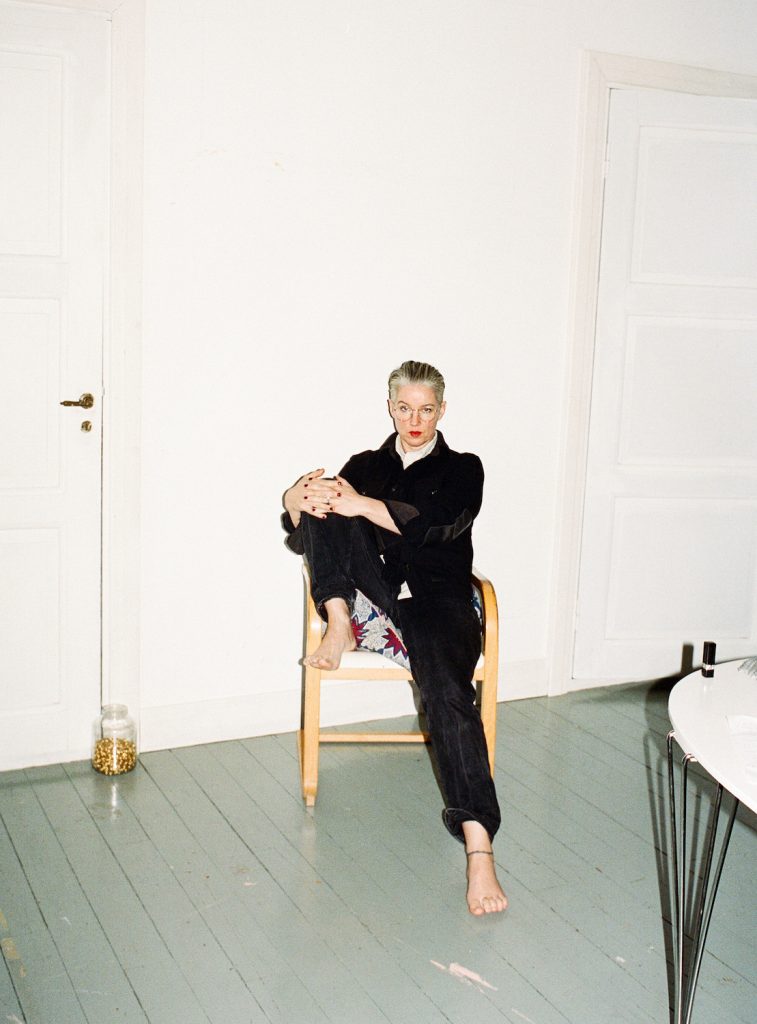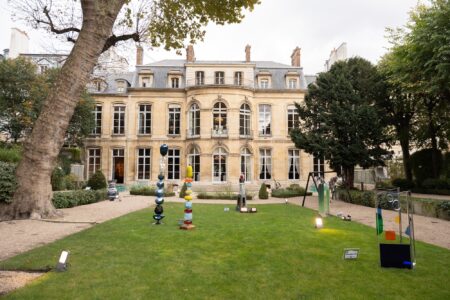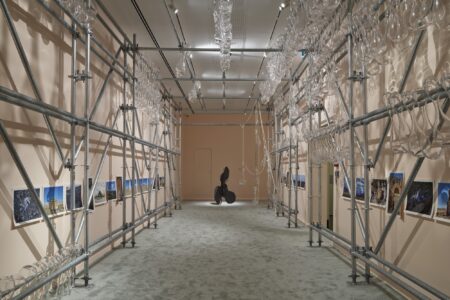Åsa Jungnelius: Desire, Utensil, Container
Lise Coirier spoke with Swedish glass artist Åsa Jungnelius ahead of her solo exhibition, Desire, Utensil, Container, at Spazio Nobile Gallery.
Born in 1975, Åsa Jungnelius lives and works in Stockholm and Månsamåla, Sweden. Jungnelius’ artistic practice involves a material exploration that moves between the monumental and the socially and psychologically constructed. Through the physicality of the object, she questions how identities and bodily desires are formed and expressed. Her interest in body and matter centres on questions of the constant renegotiation of these two entities throughout human history. Since the early 2000s, Jungnelius has exhibited in Sweden and internationally, and has initiated and run art projects: Residence- In-Nature, WeWorkInAFragileMaterial and LASTSTUDIO. Her recent major public art commissions include the new Hagastaden metro station, for which she created Snäckan, a commission she has been working on since 2015 and is expected to be completed in 2027. The process-based public work in Södra Hamnen for Norrköpings Konstmuseum and The Inner World Exhibition began with the performance PAVILJONG 1# ENERGIER, where a hot air balloon trapped in the disused Bråvallaverket (plant), rose and fell like a collective solar mother in a common industrial wound. In addition, 20# Pavilions with an accompanying public program and permanent site-specific art has opened in the autumn of 2023. The Transit of Venus (2023), a two-part group of sculptures placed next to Observatorielunden, is a relational monument to 8 March, International Women’s Day, donated to the City of Stockholm. Jungnelius’ breakthrough was with her early works in glass and she has since held the position as one of Sweden’s leading artists within the field and has been one of Kosta Boda’s permanent artists since 2007 as well as running her own glass studio in Månsamåla since 2013.
Her work has been shown in recent years at Gallery Leu in Munich (solo 2023), Gallery Glas (solo 2023), Market Art Fair (solo 2022), Kunstnarens hus in Oslo (2021), Artipelag (2020), Stene Project (solo 2020), ArkDes (2018-19), Xiangning Art Museum in Shenzhen (2019), Vandalorum (solo 2019) and Luleå Biennale (2019). Åsa Jungnelius is represented by Gallery Leu, Munich and Spazio Nobile Gallery, Brussels. Her work is part of the collections of Moderna Museet, Nationalmuseum, European Parliament Art Collection, Malmö Konstmuseum, Norrköpings Konstmuseum, Växjö kommun, Glasmuseet Ebeltoft Danmark, National Swedish Art Council, Stockholms läns landsting, Skövde Konstmuseum, Röhsska Museet, Smålands Museum and The Glass Factory in Boda. In 2022, Jungnelius received an honorary doctorate from Linnaeus University, Faculty of Arts and Humanity. She held a position as Associate Professor at Konstfack, College of Arts, Crafts and Design, Stockholm between 2012-22 where she is also a MFA graduate (2004). She became a member of Bildkonstnärsfonden (Swedish Arts Grants Committee) in 2023. In 2024, a public art work will be completed for a new cultural center in Gävle in conjunction with the inaugural exhibition as well as start up an artistic research project in a collaboration with Consulate General, Swedish Research Institute in Turkey. Spazio Nobile represents her since 2021.
Lise Coirier (LC): What do the three words Desire/Utensil/Container stand for and how do they relate to each other?
Åsa Jungnelius (AJ): An abstraction – to be able to carry what we receive from life, but especially how we can give to each other. With the tools we have in our personalities, which are always sharpened and re-sharpened throughout life, so that we can reach each other and our own earth. I see desire as both a window and a way out, but also as a force for progress.
L.C.: Is there perhaps a sense of materiality and immateriality?
A.J.: All conflicts materialise in our common society. How can we accommodate this with our physical and emotional memories and experiences?
L.C.: And a “secret recipe” you would like to share with us about how you approach materials such as glass or stone, in their individuality or as mixed media.
A.J.: Personally, the lava-like power of glass in its creation gives me an inner peace. Also, the repetitive movement and physical labour involved in the process. When I work with a larger team like the Kosta Boda glassworks, I have access to the power and experience of the great glassworkers. To create with the hand is to think, and when we are in a team, we think together like a six-headed monster, or rather, like a cat!
The artistic action and the work with stone, mostly the more malleable Carrara marble, is converted from the glass process. With the stone I slowly chew my way into the material; the slowness allows the sculpture to find its way further into my stomach and become my own soil. The fact that the material is so clearly linked to a place and the eternity of the universe, clarifies its use throughout art history and magnifies human smallness.
L.C.: Do you see a dichotomy between glass and stone that you would like to explore?
A.J.: I am not particularly interested in the dichotomy of materials, as it is an approach that sees the world in opposition, which in turn can lead to exploitation, domination or conflict between different parties. I am more interested in the movement, energy and exchange that is possible with an open approach.
L.C.: How much does Småland’s Kingdom of Crystal influence both your daily life and your artistic practice?
A.J.: Småland has taught me so much, living and working in a glass village that has a long tradition of production, but also a plight in the collective memory. When the population left this place in the 1850s for America, when it was not possible to live on what the Earth gave, it created a mood of caution and despair. I am proud to be part of this tradition of craftsmanship, of travelling, of inheritance and of the constant transfer of knowledge around the material glass. But perhaps what Småland has given me most of all is an immersion in circular thinking, a system in which we are all involved. It has also made other actions possible, such as blowing up a hole with dynamite, and thus giving birth to a new artistic chapter based on site-specific work.
L.C.: The landscape or industrial history of the region you come from has a lot to do with your work, can you tell us more about that? This seems to be both an “in-between space” for you and an exploration of our origins.
A.J.: I think about how we have moved and lived through the landscape throughout history, and how in many places a pervasive chastening and impoverishing approach materialises the prevailing political structures, power relations and ideological perspectives of the time. We humans undeniably leave traces, some of which are completely irreversible. I try to understand what mechanisms drive us; is it desire that haunts us?
L.C.: The combination of glass and marble/ stone is very special. What is the common thread between them? Is it perhaps the choreography of the gesture, the direct physicality or the idea of collage and assemblage that is important to you?
A.J.: Physically I am drawn to these materialities. I always listen to my intuition and think that it will lead the way. I don’t really know what the materials do with each other yet, but I know that there is a longing, something physical in me.
L.C.: I feel the search for minerality and the return to nature in your work, both in stone and in glass. How interested are you in wilderness, archaeology and human roots?
A.J.: I am very interested in basic human needs, the question of what do we really need in a human life? For example, I have been working closely with the artist Markus Vallien and his knowledge of how to live with the materials available in your area and the basics such as fire, water, shelter, food, hunting, fishing, edible plants, healing herbs. It is a method of looking back into the past, on how things used to be – a practice also developed with students at Konstfack in Stockholm. It is through these experiences, investigating how we lived before industrialism, that we can understand how to move forward together from the situation we are in now.
L.C.: Can you give us some references, travels or sources of inspiration that have guided you in recent years?
A.J.: There are many journeys that in different ways have influenced the braid that formed my artistic practice. During the years that I was doing the project Residence – In – Nature locally in Småland and in the northern part of Sweden, Norrbotten, I was interested in understanding both the industrialised landscape that the forest industry represented, but also the spiritual in the concept of nature. I approached a shaman to take me down an abandoned well, a dizzying journey and an important passage to a deeper understanding of how all life and collective experience are connected.
L.C.: Talking about the philosophy you have developed in relation to artefacts, do you follow a precise process when making glass or stone objects? Or do you follow your intuition and direct gestures?
A.J.: It is always intuition, an impulse that makes me do something. The uncertainty of the result is central, as it requires maximum attention throughout the process.
L.C.: What is the intrinsic value of desire in your work? Do beauty and aesthetics play an important role? Femininity and intimacy?
A.J.: Desire is present in some of my work, perhaps mainly to describe vulnerability and imperfection. Beauty for me is something you can rest your eyes on and find comfort in, but I often wonder why people think beauty is good? I start with myself as a human being and the experiences I carry within me, I am obviously a feminist, although the whole concept has been popularised. The power of giving birth to a child has also preoccupied me, but femininity is more of an image or an ongoing social spectacle. Sometimes I participate and sometimes I am horrified.
L.C.: You are reinventing tools and mixing techniques, searching for new paths and a new palette like a painter. Is this research an individual quest or a team effort with studios like Kosta Boda – Orrefors?
A.J.: It is both, materialisation, aesthetics and colours come from the artistic drive, like looking for a new combination of flavours like a chef.
L.C.: Documenting and photographing your process and living environment seems to be as important as the final result. Could you tell us more about your collaboration with the photographer Märta Thisner? There are different layers, from the anecdotal to the iconic representation of the object, as well as portraits of you in a very immersive context, which can range from everyday life to the most intimate ‘moments’ of your art practice.
A.J.: Märta’s observational skills and unique voice add another layer. She photographed a piece I made with assistants at Åfors 2018, The Portal, in the large barn in the village that served as a temporary studio. When we looked at Märta’s photographs, it was as if we were discovering the world together. It became a collaboration, and Märta has been following me ever since. Märta has an innate ability to capture the relationship between people and materiality. In her ability to observe, she exposes human vulnerability and sees the environment as it is. Märta’s images reveal a clarity when reality is wrapped in darkness.
L.C.: With this first solo exhibition at Spazio Nobile, what message do you want to convey to a new audience of art lovers and collectors?
A.J.: I am always humbled by new situations like this. Of course, I want the artworks included in the exhibition to start a process, a thought or a mood in the social space of an exhibition or a person’s home.
Åsa Jungnelius, Desire, Utensil, Container, is on view at Spazio Nobile Gallery through September 15th, 2024. All photos by Margaux Nieto.
@spazionobilegallery
@asajungnelius
